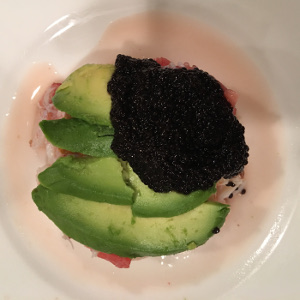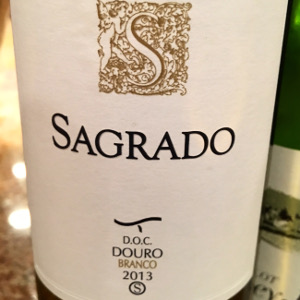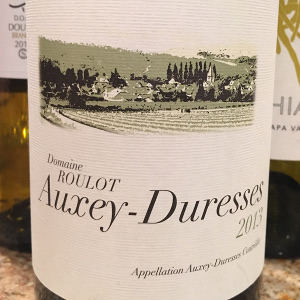Feast Yourself Thin: salad of peekeytoe crab, sea urchin and caviar
 This dish, inspired by David Bouley, is a pure expression of the sea. The flavors of the crab, caviar and sea urchin are all distinctly maritime, yet all three are radically different. For me, the slightly fatty quality of the avocado serves to tie them all together. This is a great dish to make when both crabs and sea urchins are in season. Be prepared to substitute blue crabs for peekeytoe and Maine sea urchins for those from the Pacific Northwest.
This dish, inspired by David Bouley, is a pure expression of the sea. The flavors of the crab, caviar and sea urchin are all distinctly maritime, yet all three are radically different. For me, the slightly fatty quality of the avocado serves to tie them all together. This is a great dish to make when both crabs and sea urchins are in season. Be prepared to substitute blue crabs for peekeytoe and Maine sea urchins for those from the Pacific Northwest.
Serves 6
1 pint peekeytoe crab
2 ounces osetra caviar
6 fresh sea urchins
2 avocados
2 ruby grapefruits
2 – 3 limes, depending on size
Salt and pepper
Ask your fishmonger to cut the urchins in half, which will save you an awful lot of trouble. The urchin roe is then fairly straightforward to remove. Retain only the fawn-colored roe; I imagine you will not be anxious to keep anything else you find in there. Season the crabmeat with lime juice, salt and pepper. Peel the grapefruit with a paring knife and use a serrated knife to remove the segments. Cut each segment in half, and add them along with the grapefruit juice to the seasoned crab. Cut the avocado in half, remove the pit, and scoop the flesh from the skin with a spoon. Slice into relatively thin slices and reserve.
Use a four-inch pastry cutter as a mold, placing it in the middle of the plate. Fill the cutter halfway with the seasoned crabmeat. Lay one-sixth of the sea urchin on top, and cover with sliced avocado. Spread as liberally as you dare with caviar and garnish with chives.
 Douro Branco 2013, Sagrado
Douro Branco 2013, Sagrado
Portugal’s Douro Valley has been known for centuries for its fortified Port wine. Justly renowned, it tends to eclipse the lighter wines of the regions. This should not, however, prevent you from exploring them. First to come to notice were the reds, produced from traditional Port varietals but unfortified, and the first real success story was Barca Vehla, which is still a reference standard. For a time the light reds and whites were considered somewhat rustic, but in recent years there has been a complete quality revolution, and the region is now producing delightful wines from indigenous varietals. This white is a blend based on Rabigato, with Gouveio, Viosinho and a splash of Côdega de Larinho. Never heard of them? Don’t worry, it’s delicious. Although the wine showed itself rather reticent on the attack, it has a marvelously creamy texture and intriguing notes of herbs and spice and an almost mineral note that develop on the palate.
 Auxey-Duresses Blanc 2013, Domaine Roulot
Auxey-Duresses Blanc 2013, Domaine Roulot
Jean-Marc Roulot is extraordinarily gifted – not only a movie star, but also one of the established stars of among Burgundian winemakers. His sensitivity and sure hand are evident in all his wines, which are characterized by racy acidity, a mineral tang, and a lush, silky feel on the palate. Here he uses 60 year-old vines from the modest commune of Auxey-Duresses to craft a wine of finesse and elegance which belie the nature of the appellation. There is a lovely lemony freshness touched with some gentle oak spice on the nose and a texture that is crisp yet not lacking substance along with a lingering finish. A great match with this dish: too much oak or weight would probably overpower the delicate maritime flavors of the salad but this is super-elegant white burgundy with a splendid restraint.
Comments